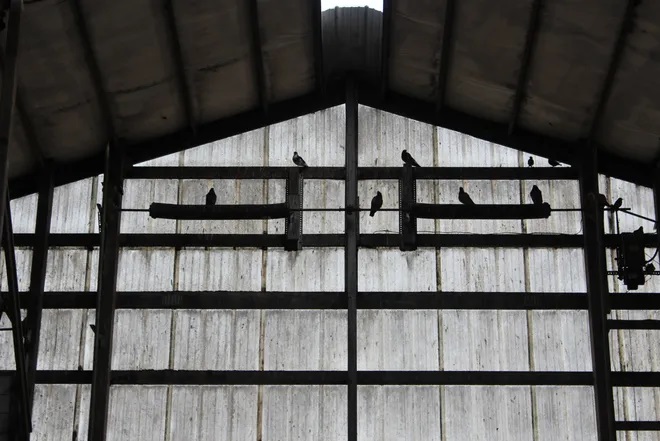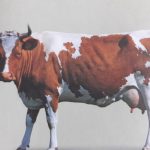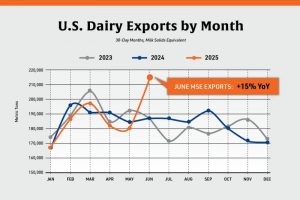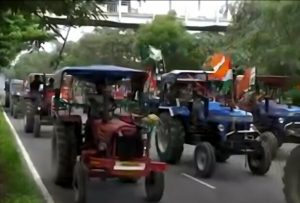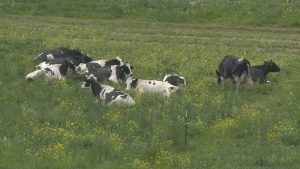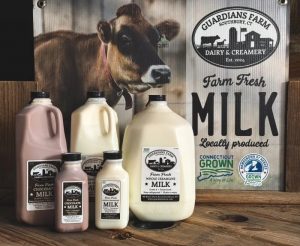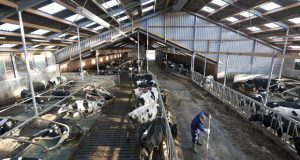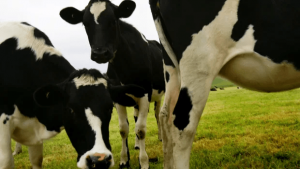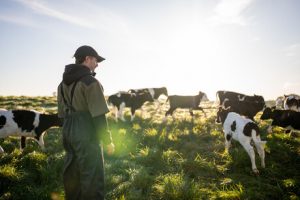
With colder temperatures, we are seeing a significant increase in bird pressure on dairy farms.
Birds have always been a concern on dairy farms, but the onset of avian influenza virus type A (H5N1) has brought a greater spotlight to the issue. Birds are drawn to livestock operations’ continuous supply of available fresh feed. They feed at forage bunkers, piles and feedbunks, consuming the energy-dense components of the feedstuffs or ration. Birds also increase disease risk by contaminating livestock feed.
European starling is a hungry, invasive bird
The most common invasive bird migrating to dairy farms in the winter is the European starling. Adult starlings are about 8.5 inches in length and weigh 3.2 ounces. Like most other birds, starlings consume about half their body weight in grain daily. It is not unusual for flocks numbering in the tens of thousands to migrate to a farm, leading to feed consumption well above 1,000 pounds per day.
With colder temperatures, we are seeing a significant increase in bird pressure on dairy farms. Birds have always been a concern on dairy farms, but the onset of avian influenza virus type A (H5N1) has brought a greater spotlight to the issue. Birds are drawn to livestock operations’ continuous supply of available fresh feed. They feed at forage bunkers, piles and feedbunks, consuming the energy-dense components of the feedstuffs or ration. Birds also increase disease risk by contaminating livestock feed.
European starling is a hungry, invasive bird
The most common invasive bird migrating to dairy farms in the winter is the European starling. Adult starlings are about 8.5 inches in length and weigh 3.2 ounces. Like most other birds, starlings consume about half their body weight in grain daily. It is not unusual for flocks numbering in the tens of thousands to migrate to a farm, leading to feed consumption well above 1,000 pounds per day.
Birds of a feather flock together and spread disease between farms
Birds have been implicated in the transmission of pathogens due to their close contact with animals. The most common way pathogens are spread from birds to livestock is through the excretion of feces into cattle feed and water sources. Starlings can fly at speeds up to 45 mph and travel 20 to 30 miles each day between roosting and feeding sites, thus transporting pathogens between livestock facilities.
The presence of high-density bird flocks at livestock facilities creates conditions ideal for the transmission of pathogens between birds and cattle. Birds can acquire and recirculate pathogens, including H5N1 bird flu and salmonella, on dairy farms. Starlings may also contribute to pathogen transmission by physically moving cattle feces containing salmonella, E. coli, or other pathogens into feed and water troughs, thereby disseminating pathogens throughout livestock facilities.
Solutions for deterring pesky are many but not always foolproof
The best defense is to make the farm less inviting and deter birds from coming in the first place. Clean up waste feed from outside and around bunkers so it is not as easily accessible to birds. Seal any holes or gaps birds may use to gain access to buildings where food is plentiful.
Strategies that deter perching in rafters or inside buildings can be used as well. Install netting in open spaces to block access to the rafters. The use of a simple mechanical device, such as sharp wire or barbs on rafters, or chemical agents that make roosting sites sticky or slippery, are common practices used on-farm to deter birds from roosting in barns. However, each of these methods can take time and money to maintain over long periods.
Solutions to control bird populations by lethal methods have been under scrutiny due to the slow death of affected birds and the effects it can have on non-target species that may consume it, such as songbirds. Most of the nuisance species of birds (sparrows, pigeons and starlings) are not protected under federal law. Thus, shooting and trapping are available methods to help control bird populations. While both can be time-consuming and have safety concerns, several dairies have found success in exterminating large numbers of starlings after dark with night vision and air guns.
Harassment devices are another way to deter birds from staying on a farm for an extended period. Sophisticated laser devices, propane exploders, hawk kites, ultrasonic sounds, pyrotechnics and others have been used extensively on farms. However, if not used at the right time of the year, effectiveness drops dramatically, and they are not long-term solutions. These devices also require a focus on safety.
For now, the best defense against birds is to make sure food and water are not easily accessible to them. This takes a combination of cleaning, maintenance and due diligence to remove opportunities for our feathered foes to make a “home” on the farm and protect the health of cattle and the dairy’s bottom line.
Barry Visser Barry Visser is a dairy technical specialist for Vita Plus.
You can now read the most important #news on #eDairyNews #Whatsapp channels!!!
🇺🇸 eDairy News INGLÊS: https://whatsapp.com/channel/0029VaKsjzGDTkJyIN6hcP1K
